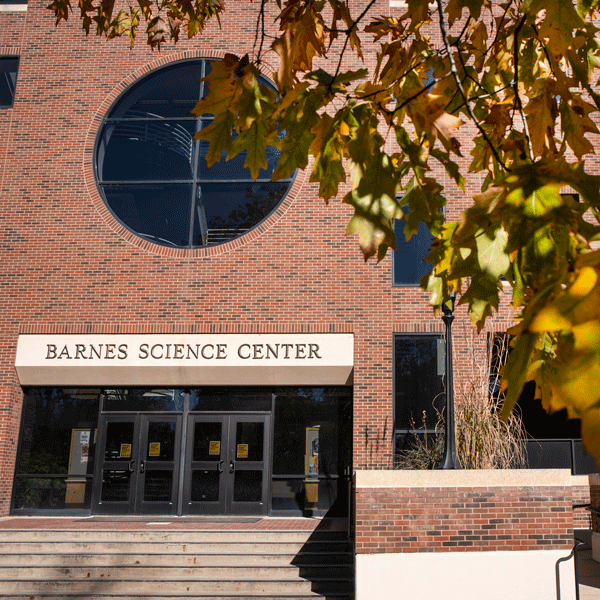Colorado College Assistant Professor of Chemistry Eli Fahrenkrug has been awarded a $177,696 National Science Foundation Major Research Instrumentation grant to advance research and undergraduate teaching in Southern Colorado. The NSF grant will support the purchase of a confocal Raman microspectrometer system, which will be the only one of its type within a 100-mile radius.
The new tool will focus laser beams at small bits of matter to probe their molecular vibrations; such information will help researchers understand how molecules assemble, how they function, and how they change under various chemical, biological, and geological conditions. The proposal was led by Fahrenkrug and included faculty contributions from CC, CSU-Pueblo, and the University of Colorado–Colorado Springs.
Additionally, Fahrenkrug and CC research students — both current students and recent graduates — have published articles in the Journal of Chemical Education and ACS Sensors. Fahrenkrug also published a third article with colleagues from China in the journal Nano Letters.
Fahrenkrug, Elias Mondaca ’21, Keenan Wright ’19, and Nicole Chavarria ’22 published an article titled “Design-Based Learning Framework for Introducing Factorial Experimental Design and Lab-on-a-Chip Separations in an Instrumental Chemistry Laboratory” in the Journal of Chemical Education.
The article is a result of research and development over the last several years at CC. Students in Fahrenkrug’s Instrumental Chemistry course (CH342) have been designing, building, and testing their own microchip chemical sensors since 2017. The article develops a design-based learning laboratory exercise to concurrently introduce analytical miniaturization, chemical separations, and formal factorial design of experiment methods. The student researchers helped compile that work to be shared more broadly with instructors through the journal.
Fahrenkrug and seven CC students also are named as coauthors on an article titled “On-Chip Optical Anodic Stripping with Closed Bipolar Cells and Cathodic Electrochemiluminescence Reporting” in the American Chemical Society journal ACS Sensors.
The article, by Jeronimo Miranda ’18, Nicholas Humphrey ’19, Rowan Kinney ’22, Riley O’Sullivan ’19, Bradley Thomas ’19, Ivan Elias Mondaca Medina ’21, Ryan Freedman ’22, and Fahrenkrug, is the result of the group’s collaborative efforts over three years to invent a new smartphone-based chemical sensor that can rapidly and accurately measure heavy metal ions like lead in drinking water for less than $1 per sensor – currently the cheapest and most accessible of its kind. The sensors address the need for high-quality environmental chemical testing in low-resource areas which require overcoming challenges of harsh transportation and storage conditions, non-technically trained users, limited infrastructure for support and maintenance, and economies that cannot afford expensive solutions.
The third article, published in Nano Letters by Fahrenkrug and colleagues from several institutions in China, is titled “Spatioselective Growth on Homogenous Semiconductor Substrates by Surface State Modulation.” As consumer electronic devices get smaller and smaller, new technologies are needed to accurately construct and arrange components on the nanometer scale (one billionth of one meter!). Fahrenkrug and collaborators worked to develop a new strategy to directly “grow” useful and complex electronic materials at the nanoscale directly on the microchips used in things like smartphones, laptops, and cars.
Additionally, last fall Fahrenkrug received a $55,000 grant from the American Chemical Society’s Petroleum Research Fund for a project titled “Selective Polymorph Crystallization within the Electrical Double Layer.” The grant was part of the ACS PRF’s Undergraduate New Investigator program.



